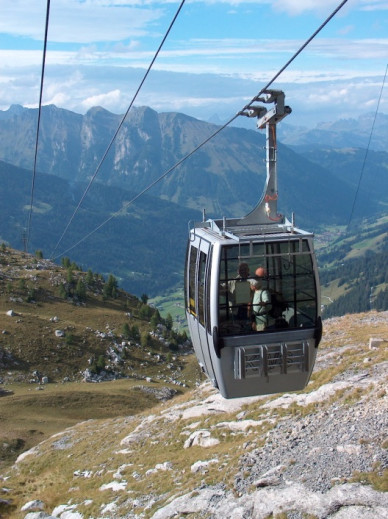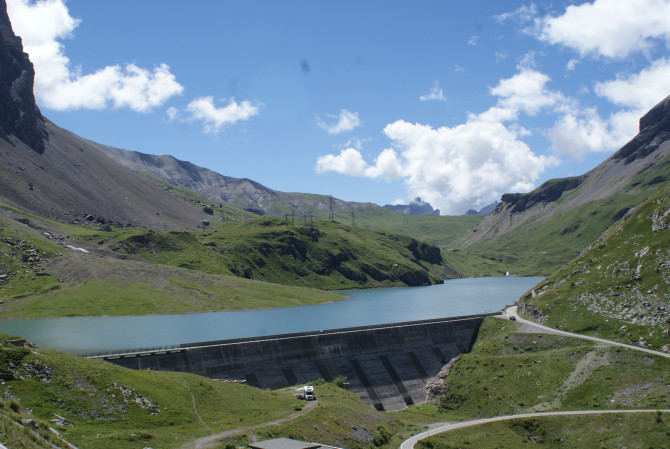History
The development of the Sanetsch power plant from the initial planning in 1917 to the present day.
The story of the Sanetsch power plant reflects, in an interesting way, the history of hydropower development in Switzerland. From the early steps of electrification to the issues of compatibility between nature and technology, as well as the clash of economic and public interests, the Sanetsch power plant — despite its relatively small size — serves as a historical case study. This also applies to the construction of the aerial cableway, which was initiated in 1959 as a dedicated industrial transport line.

"Today, it would no longer be possible to sacrifice the Sanetsch waterfall for a power plant."
Early Sanetsch Projects
The first plans for a power plant on the Sanetsch date back to the years before World War I. After the war, the same plans were revived and officially submitted as a construction project in 1920. The project envisioned the reservoir exactly where it is located today, at 2,055 meters above sea level. Due to various political and societal obstacles, the path to the realization of the Sanetsch power plant was not cleared until 1959.

Kraftwerk Sanetsch Ltd.
Kraftwerk Sanetsch Ltd. was founded on August 6, 1959, with a share capital of 8 million Swiss francs. The partners are Energie Wasser Bern and BKW Energie AG, each holding a 50% stake.
Concession
Based on the concession granted by the municipality of Savièse and approved by the State Council of the Canton of Valais on January 19, 1950, as well as the concession granted by the Canton of Bern on September 13, 1966, the Saane River is utilized from its source at the Sanetsch Pass down to the valley floor at Innergsteig.

